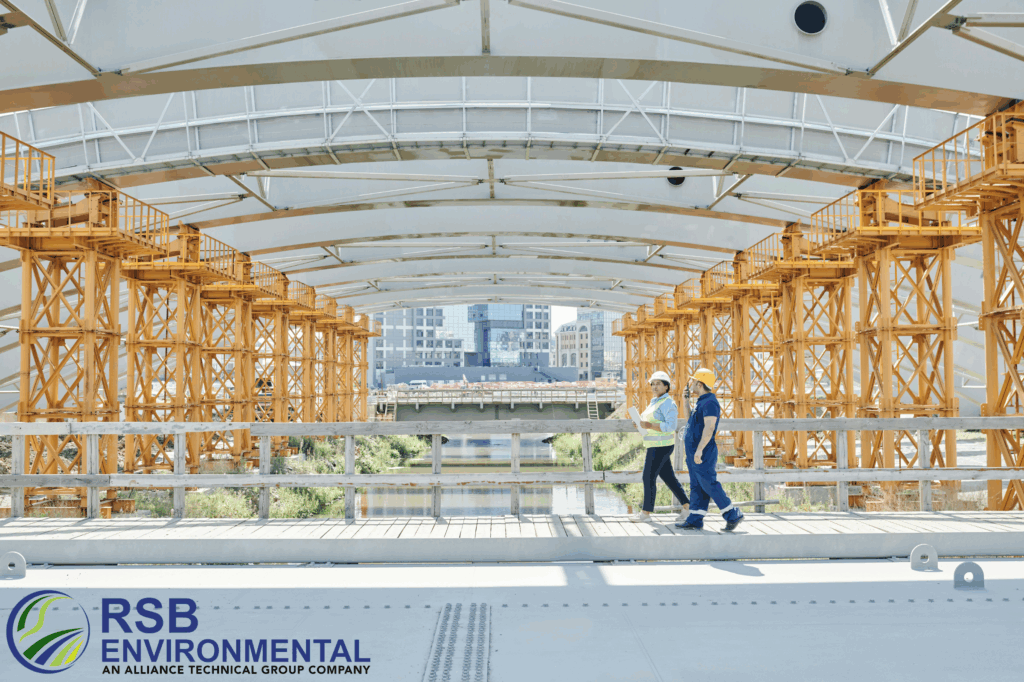Why Lenders Should Require Both Phase 1 and Phase 2 ESA
Every commercial real‑estate deal carries an invisible environmental dimension. The need to discover hidden hazards—underground storage tanks, legacy solvents, radon, seasonal wetlands, even stray species protected by law—has never been greater. One phase 1 assessment alone may flag risk, but it rarely answers the bigger questions about scope, size, and impact. Requiring a Phase 1 and a phase II (Phase 2) ESA in the correct order gives lenders complete information for confident financing decisions while satisfying modern regulations. The dual assessment components convert vague concerns into measurable numbers, protecting the bank, the community, and future occupants.
1. Understanding the Two Assessments (Phase 1 and Phase 2 ESA)
Phase 1 ESA
• Desk‑and‑field research that asks one key point: “Is there any reason to suspect contamination at this place?”
• Consultants perform record reviews—title chains, aerial photos, fire‑insurance maps, and local officials’ files for historic issues.
• They interview past or present operators, tenants, and user groups, then conduct on‑site inspections and visual observations.
• The resulting report identifies Recognized Environmental Conditions (RECs), summarizes site history, and appends site plans that illustrate suspected problem areas.
Phase 2 ESA (a.k.a. Phase II)
• An intrusive analysis triggered when Phase 1 finds RECs.
• Field teams collect soil, groundwater, and vapor samples for accredited laboratory analysis.
• Tests cover multiple types of contaminants—petroleum, metals, VOCs, SVOCs, PFAS, asbestos, mold, even methane.
• Results are compared to federal and state laws and guidance to define concentration, condition, and geographic extent.
• The final Phase 2 evaluation quantifies costs of clean‑up in accordance with regulatory thresholds and sets the stage for corrective actions if required.
Key takeaway: the first step screens for potential hazards; the second confirms them, giving all parties hard data before purchase or loan closing.
2. Liability and Regulatory Context
Under CERCLA, a foreclosing lender can be treated as an “owner/operator” and held fully responsible for remediation requirements. Performing both ESAs in the correct scope secures the innocent landowner defense and the secured‑creditor exemption—two vital shields against future legal responsibility. Most state programs mirror or tighten federal regulatory compliance rules, so reliable dual assessments are essential across borders.
3. Business Advantages of Dual ESAs
- Sharper Valuations and Smarter Decisions
Exact contamination data allow appraisers and credit teams to compare differences in property value under contaminated vs. clean scenarios—a critical comparison for loan‑to‑value ratios. - Reduced Default Risk
Borrowers saddled with unexpected remediation quickly imperil cash flow and investment returns. Quantifying costs upfront lets lenders design escrow‑funded solutions that keep projects afloat. - More Options for Buyers and Sellers
A transparent environmental profile helps the buyer negotiate equitable terms and gives the seller a clear difference between rumor and fact. - Enhanced Secondary‑Market Appeal
Investors and rating agencies require evidence of environmental compliance and insights into long‑term liability. Dual ESAs supply that information. - ESG Credibility and Community Health
Demonstrating proactive stewardship around air, soil, and water health—from VOCs to asbestos fibers—builds trust with regulators and neighbors alike.
4. Integrating Dual ESAs into Credit Policy
Automatic Triggers
Requirement 1: a Phase 1 ESA for every CRE loan above an internal threshold or any industrial site plans showing high‑risk past activities.
Requirement 2: a Phase 2 whenever Phase 1 cites RECs involving solvent pits, leaking tanks, or suspected wetlands disturbance.
Standard Contract Language
Borrowers must deliver both reports, allow lender reviews, and provide reliance letters transferable to future operators or loan scopes.
Workflow Checkpoints
No credit‑committee decision advances without final ESA sign‑off from environmental engineers and in‑house risk officials.
Training and Accountability
Annual sessions refresh underwriters on emerging contaminants, evolving requirements, and lessons from courtroom cases.
Consultant Roster Management
Maintain a vetted list of firms whose field experience, QA/QC programs, and turnaround times match the bank’s purpose and service‑level expectations.
5. Frequently Asked Questions
Will ordering a Phase II ESA delay my closing?
A coordinated schedule usually adds only one to two weeks because drilling occurs while the Phase 1 draft undergoes peer analysis and internal reviews.
Who pays for Phase II ESA sampling and lab work?
Industry custom places the costs on the borrower, aligning environmental diligence with appraisal and legal services.
Does a Phase II ESA create new liabilities for the bank?
No. Thorough evaluation documents compliance, strengthens safe harbors, and clarifies risk allocation among all parties.
How long are ESA reports valid?
A Phase 1 is “fresh” for 180 days; both assessments need updating if site plans or land use change materially.
What contaminants does a standard Phase II ESA test for?
Typical panels include petroleum hydrocarbons, metals, chlorinated solvents, VOCs, SVOCs, radon, PFAS, asbestos, and mold—plus site‑specific add‑ons driven by regulations or lender concerns.
Dual ESAs are not administrative hurdles; they are strategic safeguards. By completing every step—from Phase 1 screening to Phase II confirmation—lenders turn unknown environmental impacts into quantified line items. That disciplined approach protects collateral, upholds regulatory compliance, and gives downstream investors exactly the information they need. Embedding the practice into credit policy is no longer a luxury but a clear‑eyed necessity for anyone who underwrites or services commercial real‑estate investment loans.
Take control of environmental risk before it controls you. Request a complimentary ESA‑policy audit from RSB Environmental. We will benchmark your current process, highlight any gaps, and give you an actionable roadmap—protecting your balance sheet and strengthening market confidence.
RSB Environmental—helping lenders, borrowers, and communities make informed, responsible environmental decisions.
If you need any assistance with Why Lenders Should Require Both Phase 1 and Phase 2 ESA for CRE Loans, please email info@rsbenv.com. We look forward to hearing from you.




